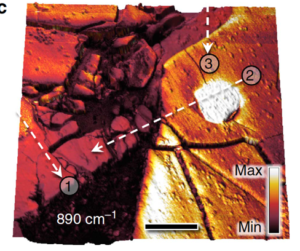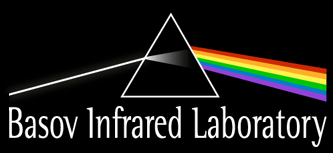Nano-infrared spectroscopy of extraterrestrial samples
Nanoscale infrared spectroscopy as a non-destructive probe of extraterrestrial samples
Nature Communications 5, 5445 (2014). Ref. [200]
Read More
 Advances in the spatial resolution of modern analytical techniques have tremendously augmented the scientific insight gained from the analysis of natural samples. Infrared spectroscopy remains an invaluable contactless probe of chemical structure, details of which offer clues to the formation history of minerals. Here we report on the successful implementation of infrared near-field imaging, spectroscopy and analysis techniques capable of sub-micron scale mineral identification within natural samples, including a chondrule from the Murchison meteorite and a cometary dust grain (Iris) from NASA’s Stardust mission.
Advances in the spatial resolution of modern analytical techniques have tremendously augmented the scientific insight gained from the analysis of natural samples. Infrared spectroscopy remains an invaluable contactless probe of chemical structure, details of which offer clues to the formation history of minerals. Here we report on the successful implementation of infrared near-field imaging, spectroscopy and analysis techniques capable of sub-micron scale mineral identification within natural samples, including a chondrule from the Murchison meteorite and a cometary dust grain (Iris) from NASA’s Stardust mission.

